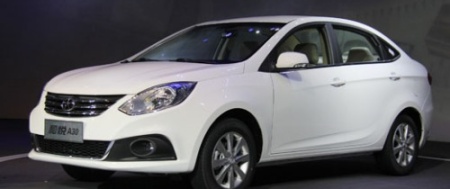Buying a car is a major financial commitment, so do your research to be sure you’re getting a fair price. To avoid being taken advantage of, it is essential to scrutinize any car you plan to buy luxury car in Dubai very carefully. In this piece, we’ll teach you all you need to know to inspect a car thoroughly in Dubai before you buy it.
The Importance of a Pre-Purchase Inspection in Dubai Car Sales
Before you buy a new car, it’s important to get it inspected first. You may use it to find out how much the automobile is actually worth and learn about any issues it may have. Not all problems are immediately obvious during a test drive. Therefore it’s important to do a comprehensive check. In the long run, this can prevent the need for expensive maintenance and repairs. The results of a pre-buy inspection can also provide you bargaining power when it comes time to purchase the vehicle.
Knowing What to Look For During a Car Inspection
It’s crucial to have a foundational knowledge of what to look for before beginning the examination. You can get started by learning about the car’s usual problems based on its make and model. Online communities and customer evaluations can help shed light on potential automotive issues.

Evaluation of the Car’s Skin and Paintwork
One of the most critical aspects of an automobile examination is appearance. Look for signs of repainting, rust, and accidents, such as scratches and dents. Check that the trunk, the hood, and the doors all function normally. Tires should be checked for defects, uneven wear, and deterioration. Check the windshield, windows, and lights to ensure they are in good working order.
Examining the Car’s Interior for Features and Condition
The condition of the car’s interior should also be evaluated. Look for tears or stains on the seats, carpeting, and any upholstery. Make sure that everything on the dashboard, including the gauges and the controls, is in good working order. Make sure that the HVAC (heating, ventilation, and air conditioning) is in good operating order. The radio, the power windows, and other electronics should all be tested as well.
Examination of the Vehicle’s Powertrain: Testing Its Efficiency and Operation
When you are looking for the best car to buy in Dubai, the check of the vehicle’s engine and transmission is crucial. Look for leaks, rust, or other damage in the engine compartment. The oil level and quality should be checked. Check the coolant, transmission fluid, and brake fluid. Get the motor running and keep an ear out for anything out of the ordinary. Get behind the wheel and see how the automobile handles by pressing the gas, releasing the brake, and shifting gears.
Examining the Car’s Steering and Suspension for Handling and Stability
Assessing the vehicle’s stability and safety also involves looking at the suspension and steering. Inspect the springs, struts, and shock absorbers for damage or wear. Verify the smooth operation of the wheel, tie rods, and ball joints. Check for any strange sounds or vibrations when driving, especially when making turns or travelling over bumps.
Verifying the Vehicle’s Electrical Components and Their Proper Operation is Part of the Electrical System Inspection
The battery, alternator, starting motor, fuses, and relays are all part of the electrical system, which is crucial to the operation of any contemporary automobile. Any problems with the car’s electrical system might affect the vehicle’s performance and safety, so it’s crucial to check that these parts are in good working order.
The car’s battery should be among the first things you examine. Checking that the terminals are clean and corrosion-free should be your first order of business. After that, you can check the battery’s voltage with a voltmeter. Around 12.6 volts is what you should see from a fully charged battery. The battery may be weak or need replacing if the voltage is much lower than normal.
Examine the alternator next. This part provides energy to the car’s electrical systems by charging the battery. The alternator belt should first be checked for looseness and wear. The output voltage of the alternator can be measured with a multimeter. The range of normal voltage while the engine is running is 13.5-14.5 volts. If the alternator’s output voltage drops, it could be a sign that it needs to be replaced.
The starting motor, which spins the engine over, should also be checked. First, make sure all electrical connections are firm and corrosion-free. After turning the key, you can use a voltmeter to measure the current going to the starter. There could be an issue with the starter motor or its electrical connections if the voltage is low or non-existent.
In addition to there parts, the car’s fuses and relays should be checked. These parts prevent surges and shorts from wreaking havoc on the electrical system. Check for burnt-out fuses or worn-out relays, then replace the problematic components.
Examining the Brakes and Tires of the Vehicle for Wear and Tear
When it comes to a car’s safety system, few parts are more important than the tires and brakes. When examining them, keep an eye out for these details:
Tires: Determine the tire wear patterns and tread depth. Problems with alignment or suspension can cause uneven tire wear. Tires dry rot and crack with age, so that’s something else to keep an eye on.
Brakes: Check for wear on the brake pads, rotors, and callipers. Verify the quality and quantity of the brake fluid. To ensure that the brakes are in good working order, you should firmly apply them at a slow speed.

Driving Experience Evaluation through a Test Drive
After a thorough visual examination, a test drive is in order. Some things to keep an eye out for are:
- To rev up and slow down: Make sure the car’s acceleration and braking systems are in good working order by testing them.
- Verify the steadiness and responsiveness of the vehicle’s steering and handling with a series of tests.
- Make sure the transmission is shifting smoothly by testing it.
- Check the car’s suspension to see if it effectively dampens road imperfections and ensures a comfortable ride.
Taking Care of the Paperwork and the Laws Regarding Car Registration and Ownership
Last but not least, check the car’s paperwork and registration status before completing a purchase. What you should search for is:
- Verify the seller’s ownership rights to the vehicle.
- The vehicle must be registered with the Roads and Transport Authority of Dubai (RTA).
- Make sure there is current insurance on the vehicle.
- The Record of Service: Verify the car’s maintenance record to make sure it has been properly cared for and that any problems have been fixed.
Conclusion
Finally, make sure all the electrical components of the automobile, including the lights, horn, and other accessories, are in good working order. To make sure your vehicle’s lighting is functioning properly, try turning on the headlights, brake lights, and turn signals. So get the car from reputable cars dealers in Dubai.
There may be an issue with the car’s electrical system if any of these parts malfunction.













